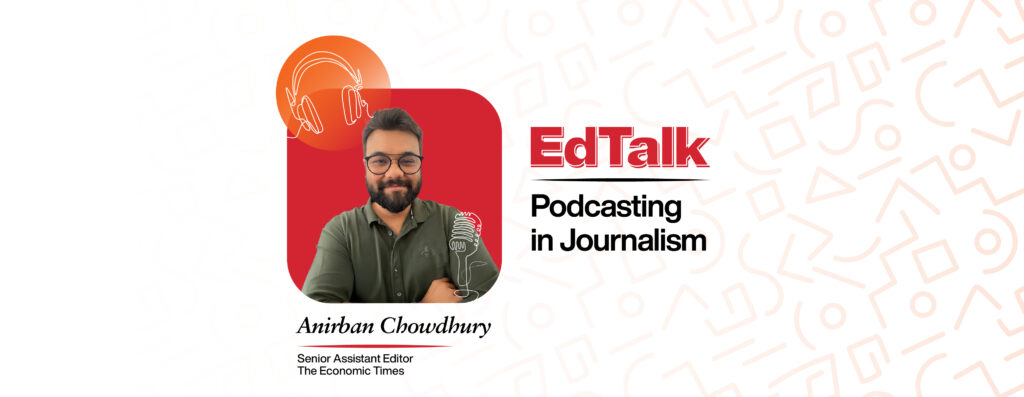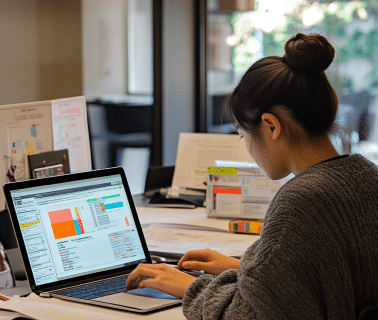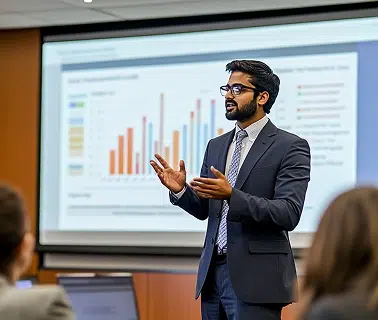I was a print journalist for 17 years. I covered aviation and logistics, writing for well-known publications like the Wall Street Journal and The Economic Times. I was comfortable, but after almost two decades, I started to feel a bit bored with just one form of storytelling. I saw how content was evolving, with so many new ways to connect with people. It was a mix of this professional curiosity and my personal love for sound. I’m an amateur musician, you see; that led me to dive headfirst into the world of audio.
It wasn’t a planned career move. It was an affinity for the world of sound and a desire to tell stories in a new, more textured way. In just a few months, I went from being a host to becoming the executive producer of The Morning Brief, and I haven’t looked back.
The Origin Story of Podcasts
Podcasts became a fad post-2003, with the invention of the iPod by Apple. Prior to this, people used MP3 players for music. But the iPod revolutionized the segment by being able to store thousands of songs and podcasts. The term podcast itself is a combination of two words: iPod and Broadcast.

What Really Makes a Podcast, a Podcast?
When I talk about podcasts, I always ask people what they think makes a conversation a podcast. It’s more than just two or more people talking. It’s about creating a unique and intimate experience for the listener. A conversation becomes a podcast when it has these three important qualities:
- Engaging: A podcast needs to hold your attention, sometimes for hours at a time. It should be so compelling that you’ll come back to it the next day to finish it.
- Inclusive: The goal is to make the listener feel like they’re right there in the room with you, even if they aren’t actively participating.
- Customized and Personalized: Podcasts are personal. There are so many kinds out there that you can find one for almost any interest. A good podcast will also feel personal from the host, often sharing anecdotes to connect with the listener.
Podcasts: The New Newsroom
Podcasting has become a huge force in journalism, and there are a few key reasons for that.
- Trust Deficit in Traditional Media: People are tired of the constant tickers, loud music, and arguments on television. They are looking for honest, authentic news analysis and are turning to podcasts for that.
- Mobile-First Gen Z & Millennials: The biggest audience for podcasts is young, with 67% of listeners being between the ages of 12 and 34. They are mobile-first and look for content that fits into their lives.
- Platform Democratization: Platforms like YouTube and Spotify have made it possible for anyone with a story and passion for starting a podcast. You don’t need a huge publication to share your voice anymore.
- News Fatigue: The same old formats of news reporting can be boring. People are actively seeking new ways to get their news, and podcasts offer a fresh and insightful alternative.
You may also be interested to read: Role of Podcasts in Modern Journalism Education
A Simple Structure for Podcasting
One of the great things about podcasting is how simple the structure is. It’s a three-part format that anyone can follow.
- Intro: This is your hook. You can start with an interesting data point or a compelling question to draw the listener in.
- Main Body: This is the core of your podcast. It could be you sharing your thoughts or a conversation with a guest expert, like a lawyer, a doctor, or an academic.
- Outro: The best outros are personal. Share your key takeaways to encourage the audience to think about their own.
The Podcasting Toolkit: What You Need
1. Tools
- Equipment: To start off with, some tools and equipment are essential for podcasting such as a microphone. It doesn’t necessarily have to be an expensive one. I use a USB mic that I can directly plug into my computer for easy recording.
- Software: Streamyard, Zencastr, and Riverside are some good choices. They are similar to Zoom or MS Teams but offer better sound quality by cutting out ambient noises to create a more intimate listening experience.
- Editing: For editing, my team uses Descript, which is an AI-based software that transcribes your audio into a Word document. This allows you to edit the sound by simply editing the words in the document.
- Hosting: Spotify for Creators is the simplest way to host your podcast. Other platforms for hosting include Buzzsprout and Acast. Acast also provides monetization streams, helping you make money from your podcast.
- Distribution: Mark your presence in every streaming platform, be it YouTube, Spotify, and even Apple.

2. Skillsets
The next step for podcasting is to identify essential skillsets and implement them for a successful podcast.

3. Monetization
In India, a majority of the revenue comes from sponsorships, with some coming from advertisements. Sponsorships, which are a form of brand marketing, require a certain number of downloads before a brand will consider sponsoring your podcast. At The Morning Brief, we do not consider looking for sponsorships until a podcast has at least 15,000 downloads. This number is not set in stone and can change depending on your podcast’s niche, engagement rate, and audience. For instance, if your podcast has a very niche topic and a dedicated audience, you could get a sponsorship even with a smaller number of downloads.
Give this a read: Solopreneur Playbook: Building Big with Just One
4. Challenges
The main challenge in podcasting is primarily related to monetization. For instance, there are many good podcasters with great content, but struggle to make decent money. This is because advertisers in India have not fully embraced podcasting as a primary advertising platform yet. It is also a challenge to convert listeners into an engaged community that is willing to pay for your content.
AI, AI, Baby!
When people ask me if AI will replace podcasters, my answer is always the same: AI won’t replace a product manager, but a product manager who uses AI will replace one who doesn’t. AI is an incredible tool that can make content creation more efficient and cost-effective. For example, there’s software that can edit sound just by editing a Word document. You can also use AI to generate scripts, summarize research, or even create video and multimedia elements. It’s not the future; it’s the present.
Read more: Stay Relevant in the Age of Artificial Intelligence
In the end, becoming a podcaster is about being curious, passionate, and tenacious. It’s about finding a topic you care about and being brave enough to tell a story in your own unique way. The tools are available, and the audience is waiting. So, what are you waiting for?
Prepare for your next career milestone with us











